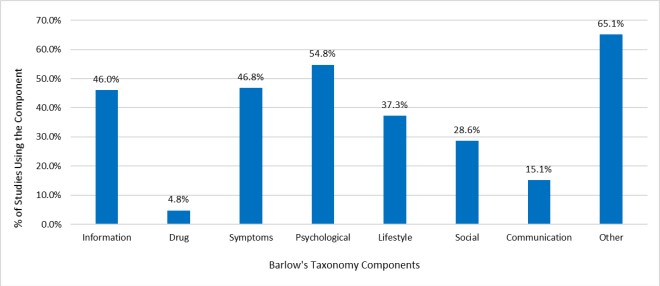Barlow Taxonomy
Barlow’s taxonomy is derived from a review of SM approaches reported in 145 studies on SM for a diverse range of chronic health conditions. The taxonomy consisted of eight components, which are presented in Table 7.
Figure 4 shows the percentage of studies included in this review using each of the components from Barlow’s taxonomy. Interestingly, 65.1 % of the programs used components that would be categorized as other under Barlow’s taxonomy, making up the largest category. This is followed by management of psychological consequences (54.8%), symptom management (46.8%), and information about condition treatment (46.0%). Drug management was the least popular SM program component among the reviewed studies defined in Barlow’s Taxonomy, with only 4.8% of the programs using it.

